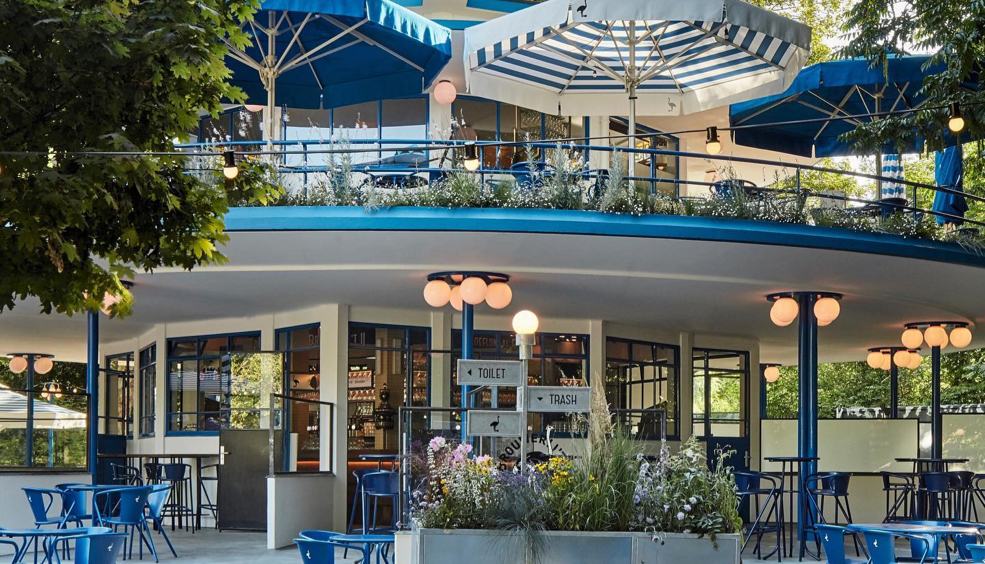SHOPPING SPECIAL: 7 UNMISSABLE DESTINATIONS
London, Milan, Berlin, A Coruña, Paris, Barcelona and Stockholm are our favourite cities for shopping tourism. Essential destinations for shopaholics!
more infoAre you thirsty? Here are five of the best beer bars in Europe
If you love craft beer, this post is for you! Read on to find the best places to quench your thirst and discover new spots in Barcelona, Dublin, Munich, Amsterdam and Prague.
more infoMoll de Xalot
By Eddy Lara Brito from www.DestinosActuales.com
The place where Barcelona embraces the sea and vice-versa
The great thing about living in Barcelona is the ability to be in a city of just the right size – big enough to be a grand European metropolis yet small enough to offer unbeatable quality of life, as well as proximity to the sea. Just right.
Since the early 1990s, when it became an Olympic city, Barcelona has experienced perhaps its most important transformation after a century of growth with the Ildefons Cerdà city expansion. This change has basically involved putting the focus firmly back on the Mediterranean. 20 years have passed now and the Barcelona coastline is undoubtedly the hub of the city, especially during the summer.
They say that Barcelona is a city that lacks anywhere new to be discovered but, when you live in this city, you realise that part of its personality lies precisely in that many hidden corners and places emerge, die and are reborn again. One of my favourite places in Barcelona is the Moll de Xaloc in the Port Olímpic.
Here you can enjoy all the splendour of Barcelona in peace and quiet. There is nothing better than an autumn evening for observing the sun draw the city skyline on the horizon: the Tibidabo, Montjuic, the Sagrada Familia, the statue of Columbus… with the Mediterranean on the other side, closer than ever and intensely blue. This is precisely where Barcelona embraces the sea and vice-versa.
By Eddy Lara Brito from www.DestinosActuales.com
Do you fancy going? Do it! Check out our prices here!
more info
Eight Bookshops To Enjoy During the Sant Jordi Book Fair
If we had to choose the ideal day for visiting Barcelona and seeing it in all its finery, that date would undoubtedly be 23 April. The celebration of the Catalan “Diada de Sant Jordi” (Feast of St George) sees Barcelona festooned with books and roses, and thousands of people crowding the streets in search of new book releases or their favourite author to autograph a copy of their purchase. Roses are also in evidence everywhere, particularly red ones, which all young men are duty bound to gift to their beloved. The ritual is re-enacted year after year and draws numerous booksellers to the city. Following is a list of the main bookshops in Barcelona which you are encouraged to visit on the Feast of St George or, to avoid the crush, any time you happen to be book hunting in Barcelona.
1. Laie
A true beacon of Barcelona’s literary scene and a must-visit destination for any reading enthusiast is Libreria Laie, specialising in art, literature and the humanities. This well managed bookstore also features a café-restaurant on the upper floor, the perfect spot for chatting about the latest literary releases.
2. La Central del Raval
Located in the heart of El Raval quarter, and housed in the former Chapel of Misericordia, is Central del Raval, a classic in the city’s literary scene, boasting some 80,000 titles. Featuring books on anthropology, architecture, design, art, cinema and photography, as well as poetry and the performing arts, among others. Also on the premises is an area devoted to literary activities.
3. Altaïr
Planning to travel anytime soon? Make a point of visiting Librería Altaïr to research your trip beforehand, as there you will find all the books you need to prepare your getaway. They specialise in travel, and as such are one of the largest bookshops in Europe, stocking travel guides, maps and books relating to all possible destinations imaginable.
4. Taifa
Located on the Calle Verdi, in the heart of Gràcia, is the bookstore Librería Taifa. Founded in 1993 by the poet, publisher and literary critic, José Batlló, they stock both new and secondhand books. While specialising in the humanities, the store is noted for its section on cinema, which the proprietors hold in great esteem.
5. Hibernian Books
Also located in the Gràcia district is Hiberian Books, which is celebrated for being the only store in Barcelona specialising in secondhand books in English. Their list runs into some 40,000 titles, covering all possible genres, including a section featuring children’s books.
6. Loring Art
Loring Art are specialists in contemporary visual culture. The store started out in 1996 with just a hundred titles, while nowadays it has some 20,000, a treat for connoisseurs of this genre. Their offerings provide a journey through 20th- and 21st-century painting, sculpture, design, fashion, photography, architecture, cinema, music, the performing arts and electronic art.
7. Casa Anita
This unique bookshop located in the Gràcia district is dedicated to illustrated books. While targeting primarily children and young readers, their titles are a delight for children and adults alike.
8. Arkham Comics
This small bookshop in El Raval specialises in comics. Although it can be challenging to jostle your way among so many volumes, this is the perfect place for devotees of graphic novels, who are urged to take the advice of Xavi, the ever-helpful owner.
Book your Vueling to Barcelona and delve into the city’s literary world, as well as revelling in one of the city’s most becoming festivities.
Text by Los Viajes de ISABELYLUIS
more info




